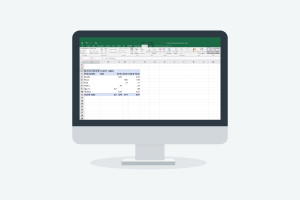
Just go to value field settings and change the summary type to “Distinct count”. Distinct counts: This simple but often tricky to calculate number is easy to get once you have data model based pivot.Once you have a data model in spreadsheet, you will enjoy several benefits (apart from multi-table pivots that is). For example, you can further slice the above report on customer’s profession or product’s SKU size.īenefits of Data Model based Pivot Tables You can add slicers too: You can slice these pivot tables on any field you want (just like normal pivot tables).(for example products table should not have duplicate product IDs). That means one of the tables must have no duplicate values on the column you are linking to. One to one or One to many relationships only: Excel 2013 supports only one to many or one to one relationships.

Same data types in both columns: Columns that you are connecting in both tables should have same data type (ie both numbers or dates or text etc.).Things to keep in mind when you using relationships Select fields from various tables to create a combined pivot report or pivot chart.In your pivot table field list, check “ALL” instead of “ACTIVE” to see all table names.Make sure you check the “Add this data to data model” check box.Select any table and insert a pivot table (Insert > Pivot table, more on Pivot tables).Using relationships in Pivot reports & analysis Excel is smart enough to adjust the relationship. It does not matter which order you use here. Click New to create a new relationship.Now, go to data ribbon & click on relationships button.Read introduction to Excel tables to understand more. Specify a name for your table from design tab. To create a table, select any cell in range and press CTRL+T. Create relationships between Sales, Products & Customer tablesĬreating a relationship in Excel – Step by Step tutorial.Then fill down the formulas for entire list of transactions.Īssuming you have 30,000 transactions, you have to write 60,000 VLOOKUP formulas to create this one report!!!.


Its what happens when you have to write a lot of vlookup formulas before you can start analyzing your data.


 0 kommentar(er)
0 kommentar(er)
